Stolzenfels
Many years ago I took the tour of Stolzenfels, and vaguely remember it (I was 8 years old at the time). The castle is worth a visit mainly because of its unique architecture, especially its five-sided keep. Like many other Rhein castles, it was started in the 1200s, and gradually expanded and improved over time. It was initially started by the Archbishop of Trier, partly to counter the construction of Lahneck on the other side of the river, which had been built by the Elector of Mainz. While this sounds almost childish, one must remember the nature of the Holy Roman Empire at this time. The Holy Roman Emperor was chosen by seven electors. The Elector of Mainz was secular, while the Archbishop of Trier was a Church elector. Balance of power was crucial to stability, and in this light the building of a counter fortress makes sense. The castle was burned by the French in the 1680s, and it later came to the House of Prussia, its leaders having it rebuilt in the 1800s mostly along its original lines.
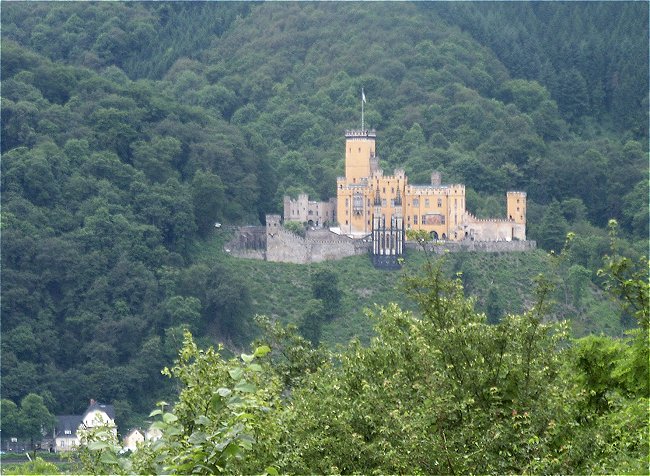
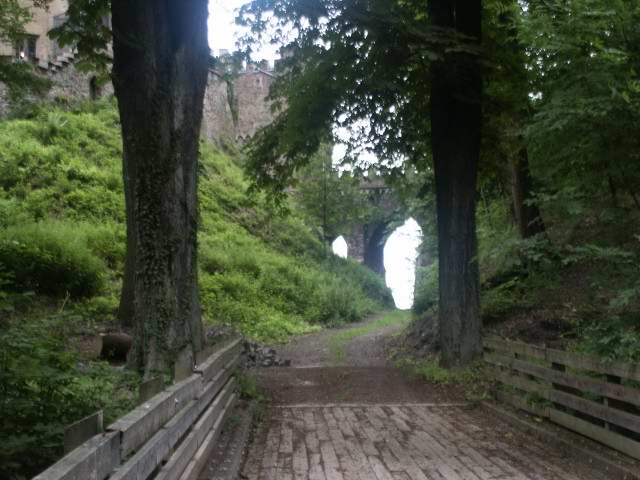
Unfortunately, much of the ground around the castle was closed when I got there in 2005, apparently only temporary as they were doing some restoration work. Thus, the view to the left was taken through a construction gate!
To go to the castle you park below along the Rhein near Kapellen. From there you take the footpath and road, which is quite beautiful and worth the walk. You will pass a small chapel (below) along the way, which is worth a stop.
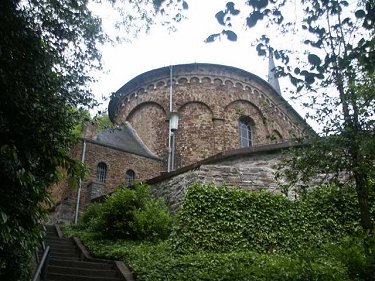
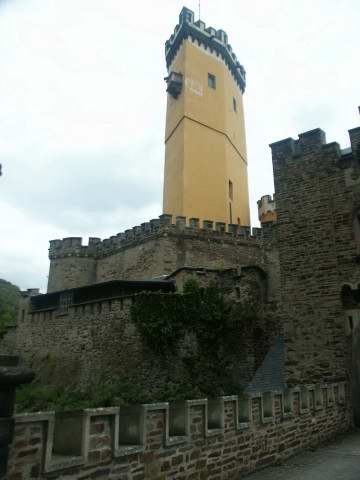
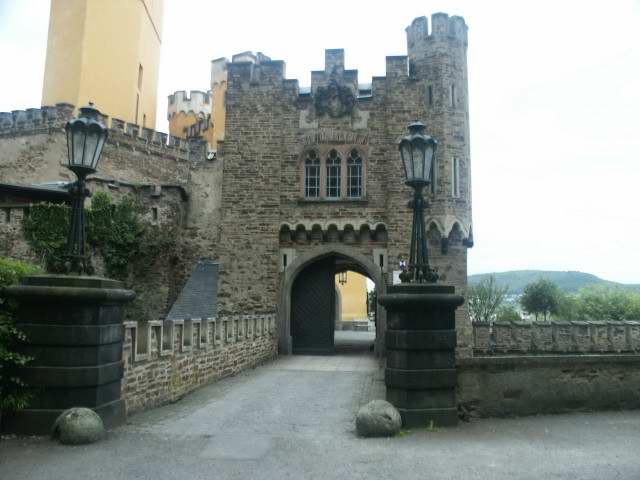
Left, the unique five-sided keep. Below, the main gate. There is a nice cafe within.
After you complete the walk, you will pass a stand alone gateway. Wind around a little longer and there you are. It takes about 15 minutes.
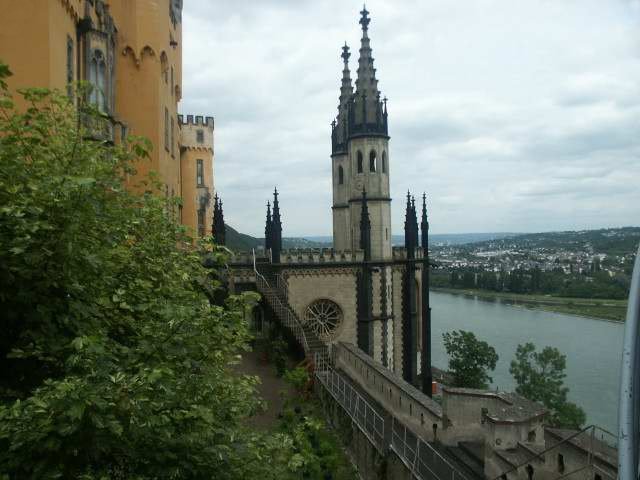
Another unique aspect of Stolzenfels is the chapel, while below is a shot from the parking below before taking the path upward.
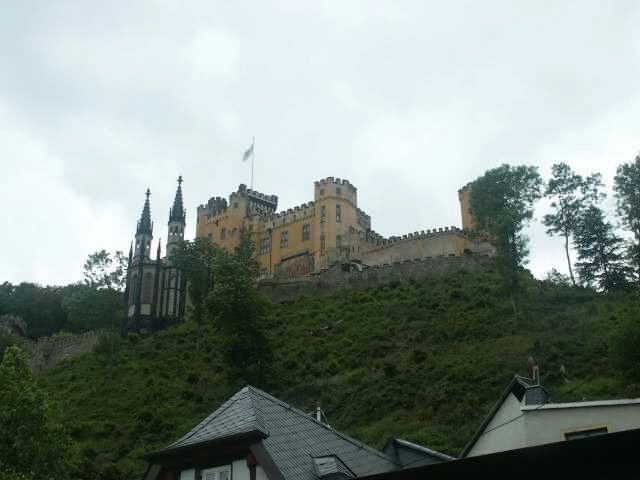
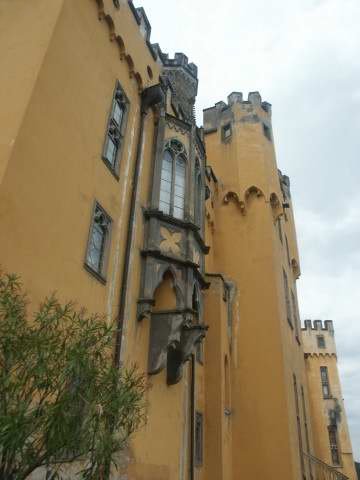
In many ways, Stolzenfels' architectural style is more palace than castle, but it still has the necessary structures and design to serve as a fortification. The structure protruding from the wall could either be a breteche or a garderobe. If the latter, then it is.... well, a bathroom! Garderobes were protrusions from the walls so that the waste would fall at the base of the castle. Later, pipes would be installed on these to carry the waste to a cesspit away from the castle. Hygiene was little understood at this time, and people lived without regular baths, handwashing, or even changing clothes. Lice and other parasites were common, and considered a humorous fact of life. Jokes were passed about regarding lice, and when people had their hair and beards deloused the "kills" were counted with much satisfaction.
Here is the official website for Stolzenfels.